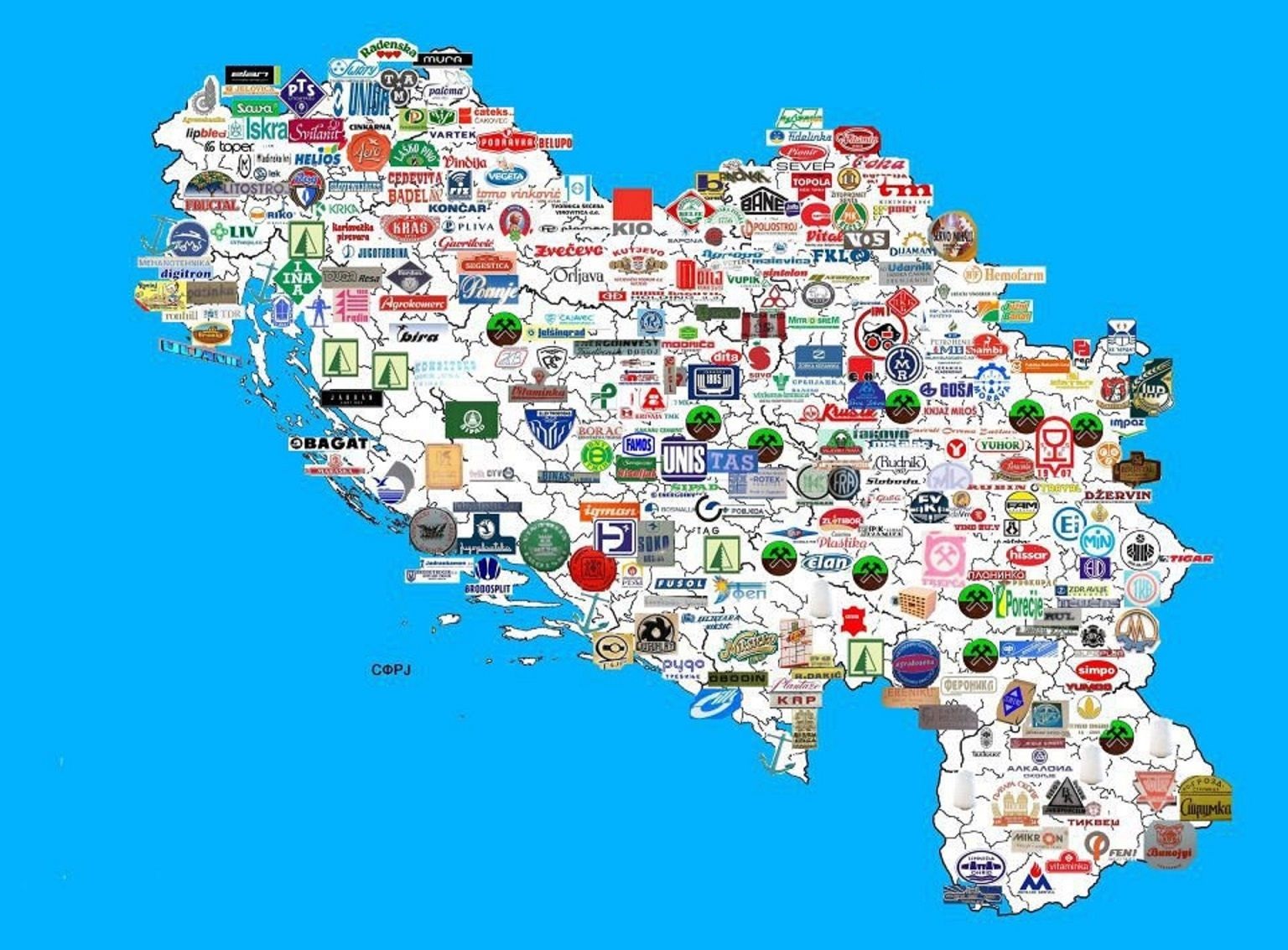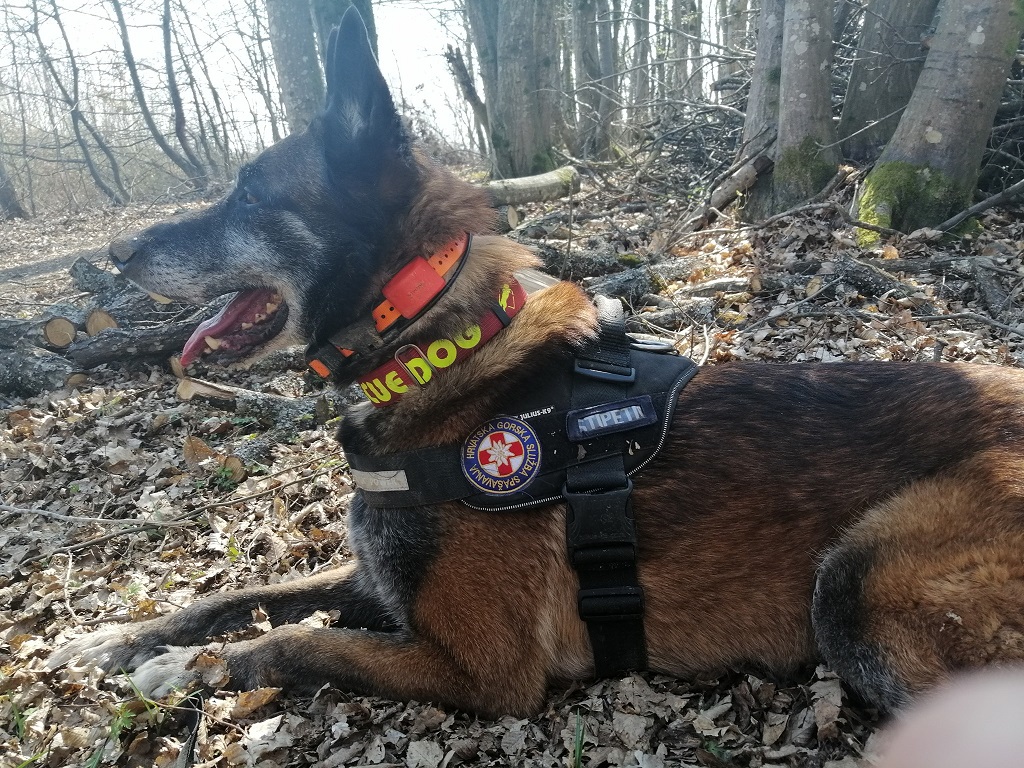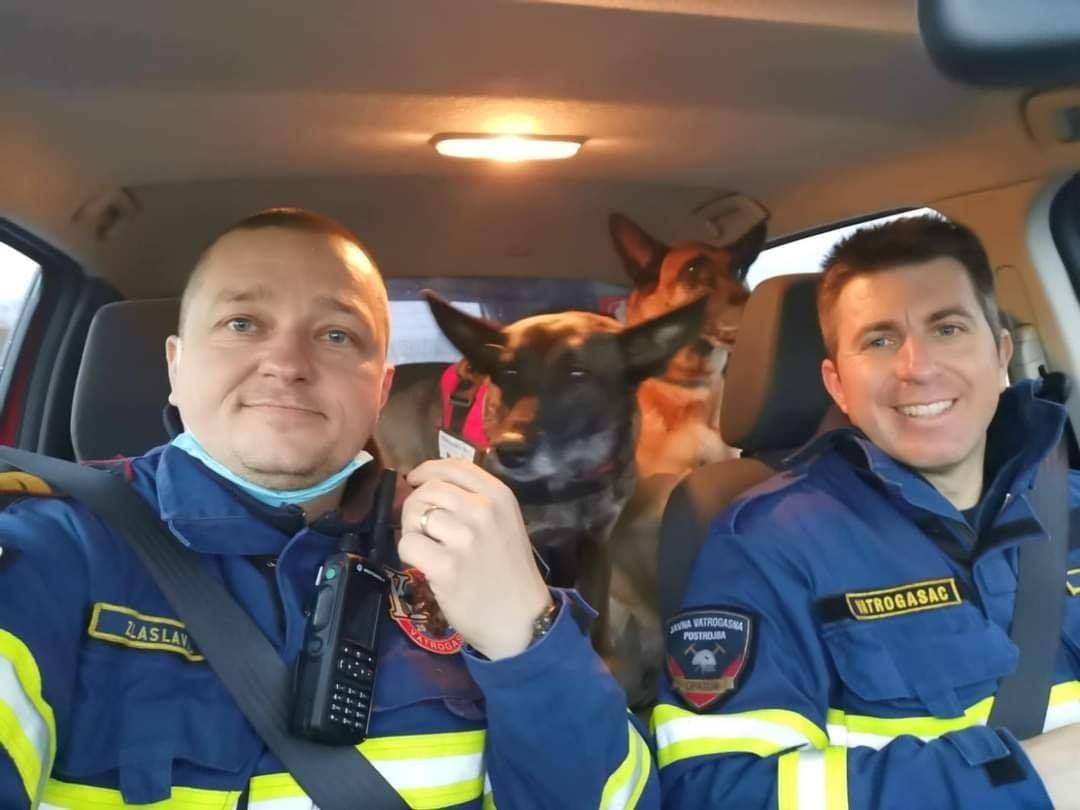Croatia Receives Another 17,550 Doses of COVID Vaccine
ZAGREB, 4 January, 2021 - Health Minister Vili Beros said on Monday that an additional 17,550 doses of COVID-19 vaccines had been delivered earlier in the day, and that 12,285 people had been vaccinated since Croatia started administering the vaccines against this infectious disease.
Beros said that a lower number of tests performed in the last few days could be ascribed to the fact that this was the period of Christmas and New Year holidays.
The minister expects more tests to be conducted as of mid-January.
As of the current stringent anti-COVID measures that are in place until 10 January, the minister said that their prolongation would depend on the epidemiological situation.
Croatia has registered 361 new coronavirus cases and 54 infection-related deaths in the last 24 hours, the national coronavirus response team said on Monday.
The number of active cases stands at 5,899 and 2,453 people are receiving hospital treatment, including 196 on ventilators.
With the 54 latest fatalities, the death toll has climbed to 4,126.
Since February 25, when the first case of infection was confirmed in the country, 213,319 people have been infected with the novel virus. A total of 203,294 have recovered, of whom 852 in the last 24 hours. Currently 16,865 people are in self-isolation.
A total of 1,035,076 people have been tested for coronavirus, including 2,985 in the last 24 hours.
PM for Looking Into Why Some Houses Poorly Rebuilt After War
ZAGREB, 4 January, 2021 - Prime Minister Andrej Plenkovic said on Monday it was necessary to look into why some houses were poorly reconstructed after the Homeland War, adding that he did not have more details.
Speaking to the press, he said "it's necessary to look into how and why that happened, who did the job, who supervised, who issued the final certificates of occupancy."
Plenkovic said that at the moment he did not have more details and that he would ask Construction Minister Darko Horvat and the state secretary in the State Reconstruction and Housing Office, Nikola Mazar.
"It's not good that there are buildings which should be stronger than they are. Everything that should, will be looked into," he said, regardless of responsibility. "The reconstruction that Croatia carried out was a big process. If some buildings were not built up to code, that should be looked into."
As for the role of incumbent Sisak-Moslavina County prefect Ivo Zinic, who was in charge of reconstruction in the area in question in 1995, Plenkovic said he was sure Zinic could provide all the necessary explanations.
Mazar said more than 156,000 family houses were reconstructed after the Homeland War, with works lasting from 1995 to 2000 and over 150 companies involved.
"Everything was done under the Reconstruction Act, the Building Act. There are documents on contractors, supervisors, architects, owners, users... There were certain guarantees and deadlines," he said.
Croatia Declares 5 January Day of Mourning for Eight Young Victims in Posusje
ZAGREB, 4 January, 2021 - The Croatian government on Monday decided to declare 5 January a day of mourning for eight young people who died of asphyxia on New Year's Eve in Posusje, southern Bosnia and Herzegovina.
Four young men and women aged between 18 and 20 presumably died as a result of asphyxiation in Tribistovo, not far from Posusje in the night between 31 December and 1 January.
Unofficial sources have said that their death was most probably due to asphyxiation caused by a gas-powered generator unit that supplied electricity to the house where they were staying.
Prime Minister Andrej Plenkovic said today that observing a day of mourning for those young victims was a sign of solidarity. He added that the decision on the day of mourning was supported by President Zoran Milanovic and Parliament Speaker Gordan Jandrokovic.
Croatia's top officials earlier sent condolences to the families of the victims and the local authorities.
Strongest Croatian Brands Survived and Succeeded After Independence
January 4, 2020 – A map showing production across the former Yugoslavia details the sustained prosperity of many Croatian favourites as some of the strongest Croatian brands are shown not only to have survived but have succeeded following independence
Media across Croatia, Bosnia and Serbia have surprised younger readers and reminded older readers with the publication of a map detailing production in the former Yugoslavia. While this trip down memory lane has caused a range of reactions across the countries of the former republic, looking at the map from a purely Croatian perspective gives some enlightening information. Namely, many of the strongest Croatian brands visible on the map are recognisable today. Some of the strongest Croatian brands not only survived independence but have since grown.
Bajadera - one of the most popular products made by Zagreb-based chocolate and confectionery manufacturers Kraš
Zagreb-based chocolate and confectionery manufacturers Kraš, Požega-based confectionery and drinks manufacturers Zvečevo, oil company INA, Koprivnica-based food company Podravka and Koprivnica-based pharmaceuticals company Belupo, vitamin drink Cedevita, Varaždin-based food company Vindija, Vukovar shoemakers Borovo, Varaždin clothes designers and manufacturers Varteks and multi-use condiment Vegeta are just some of the strongest Croatian brands that are present on the map. You are still likely to see these brand names on many Croatian high streets. Some have succeeded in reaching further into international markets since Croatian independence. Croatian-made condiment Vegeta is sold all over the world
Croatian-made condiment Vegeta is sold all over the world
Of course, not every brand visible on the map of Yugoslavia production has fared so well. In their coverage of the map, Ri.portal reminds that “Some of the Yugoslav products were used by literally the whole world - ships, cars, planes, trucks, weapons and even computers were produced... However, many of these companies no longer exist or are bankrupt.”
In their coverage of the map, Bosnian website Klix reminds that Croatian shipyards Uljanik in Pula and 3 Maj in Rijeka were at world level and produced large ships for customers from all over the world. Split-based shipyard Brodosplit, which can also be seen on the map, survives to this day.
Croatian vitamin drink Cedevita comes in a range of flavours
Ri.portal goes on to remember that Yugoslavia was one of only five countries in Europe at the time that manufactured its own computers. “Probably the most famous is the Galaxy, while the first computer produced was the CER-10,” they say. One of the Yugoslav computer makers on the map, popular in the late 1970s, was Digitron, based in Buje in Istria.
Sadly, not all of the strongest Croatian brands have made it until today. Famous tractor and agriculture equipment manufacturer Tomo Vinković of Bjelovar is no longer in production. Their famously-reliable machines are much in-demand on the secondhand market. Two new tractor manufacturers, Hittner doo and the Prima tractor factory still make tractors in Bjelovar.
With 85% of Croatian Properties Not Covered for Earthquakes, an Insurance Expert Speaks
January 4, 2021 - Croatian earthquake insurance is the exception rather than the norm, meaning that 2020 will prove a financially devastating year for many.
After the initial emotions of the earthquake, the harsh realities of life that will follow, and how it will be changed for many.
After seeing hundreds of articles in the Croatian media in the aftermath of the earthquake, all focus on the devastation and human interest stories, one story in 24Sata caught my attention on an entirely different topic, one which we subsequently covered in Croatian Earthquake Aftershocks: A Home Destroyed, Loan Repayments Unaffected.
My first reaction was that the couple should have had house insurance, but I decided to read the article. And so began an introduction into an issue which is going to have a huge impact on the lives of many people affected by the disaster. I also learned a lot more about Croatian insurance than I thought I ever needed to know.
It turned out that the couple did have insurance. Indeed, they had to have insurance, a requirement from the bank which gave them a 30-year loan on their first home, an apartment in Sisak. They moved in on November 27, 2020, 32 days before disaster struck. Before they had made the first repayment to the bank, the apartment must now be demolished. But the bank repayments must continue.
This is obviously going to be far from an isolated case, and I posted on Facebook and LinkedIn to see what more information I could learn. It has been quite an education so far, and many thanks for all the contributions received. I learned a few things, such as 1964 being a pivotal date in earthquake insurance, with policies and payments changed in the aftermath of the 1963 major quake in Skopje, (now North) Macedonia.
I also learned that cover depends on the size of the quake for it to be designated as a quake. From one current policy in Croatia:
In terms of these Terms, an earthquake signifies a naturally induced ground motion (shaking) sudden geophysical processes in the Earth's crust which manifested itself in the place of insurance with an intensity of 5 degrees and more per Mercalli-Cancani-Sieberg scale (MCS scale).
I also learned that the culture of insuring houses is not so strong in Croatia, with an estimated 30% of properties insured. While basic property insurance is mandatory for bank loans, earthquake insurance is an added extra, and not one that many take up. Indeed, there are an estimated 15% of properties with earthquake insurance.
Which means that there are 85% of properties which are not covered. The consequences of which can be felt in seconds with a major quake.
It was reported today that earthquake insurance premiums are to rise 28% in Croatia, understandably in the wake of recent events. The report also has some other numbers from the Chamber of Economy.
"The devastating earthquakes which hit Croatia last year have caused over HRK 100 billion worth of damage and many people have lost their properties."
"After the March 2020 earthquake, insurance companies paid HRK 237.5 million and processed 7,269 damages claims by the end of November, the HGK said, adding that the Zagreb quake showed that an extremely low percentage of apartment buildings had earthquake insurance."
Do the maths. Of course there will be additional payouts, particularly from the most recent quakes, but according to these official numbers from the Chamber of Economy, 100 billion kuna of damage and 237.5 million kuna of payout equates to 0.2375% of compensation.
There is a lot more to this, of course, and I am certainly no expert, but this is looking like a huge issue, one which TCN will be following. If anyone has insights or information to add, please send (with links to authoritative sites preferred) to This email address is being protected from spambots. You need JavaScript enabled to view it. Subject Insurance.
Among the many responses I received to my social media plea, Ognjen Radulovic said that he would be happy to answer some questions in his capacity of Strategic Insurance Specialist at MAI Insurance and Reinsurance Brokers. Some of the answers are below, while Ognjen has agreed to get more data for other questions.
1. What is the general culture and attitude to home insurance in Croatia?
Home insurances have been increasing over the last decade, for sure due to bank loans as collaterals but also with a different scope of required coverages. Most commonly used are Fire, Lightning, Explosion, Aircraft fall (the so-called FLEXA group of perils).
2. Earthquake insurance is an additional extra, and I understand that 85% of properties are not covered by it. Can you explain a little about the earthquake cover and its costs?
After closing FLEXA, it is possible to proceed with the closing of extras such as EQ (earthquake insurance).
Unlike FLEXA and some other named perils, EQ is a 100% reinsured peril, which means that local markets are paying premiums to reinsurers in order to obtain the cover. It also means that local markets do not participate in the remuneration of losses, they only formalize the payout once the losses have been confirmed by reinsurers.
All relations among insurers and reinsurers are strictly regulated by supervisory bodies (HANFA in Croatia).
The costs (insurance premiums) may vary among markets. With the intention to reduce the insurance premium, markets are offering coverage closing with the insured's self-retention clause based on the Sum Insured (contracted Property Value) or Loss Amount (depending on the market).
3. Several people who had earthquake cover in Zagreb in March found that they were unable to claim due to the small print. What were the main reasons for this?
Hard to answer without detailed insights. Most likely the coverage has been closed with deductible in % and stated absolute minimum of self-retention which is higher than the loss occurred.
4. How transparent is the insurance industry in your opinion, and what steps could be taken to improve the information flow and encourage more homeowners to insure their properties?
This is a subject of local insurance culture generally: for instance, Slovenia has double insurance premium per capita than Croatia, Serbia twice lower... A higher economic standard is mostly followed by a higher interest of homeowners for insurance - paradoxically, but true: the less money you have, the harder you decide to protect the property you own.
5. We are already hearing of several examples of apartment owners in the Petrinja area who were insured and had bank loans but no earthquake insurance. Some buildings have been earmarked for demolition, thereby leaving people without homes but still with the bank loans to pay. In your experience, what happens in situations like these?
Banks do not require EQ coverage, but it was not the obstacle for the owners to arrange the closure of this specific peril in addition - an example of owners' bad risk management and lack of insurance culture. They got the loan, the properties don't exist anymore, they have to return the loans as agreed.
Best case scenario: the state will provide some help, but for sure not equal to the losses they suffered.
For more on the Petrinja earthquake and to see how you can donate money, food, humanitarian, sanitary, and material aid, follow our dedicated section.
Croatian Search Dogs: Rescue Heroes Who Found Buried People After Quake
January 4, 2021 – No better technology or camera in the world could detect people under the rubble than search dogs. In the recent earthquake that hit Petrinja, Croatian search dogs found two people alive and thus saved their lives.
The earthquake that hit Petrinja, Sisak, Glina, and the surrounding area on December 29, 2020, caused enormous material damage that is still being added up. Along with 14 teams of the Croatian Mountain Rescue Service (HGSS), search dogs also searched for the missing in the ruins. Unfortunately, seven people lost their lives in the quake's rubble, but, thanks to search dogs, two were found alive.
Deputy Head of the Service and head of search teams Neven Putar Neno told Jutarnji list that there are no such mechanical means or cameras that could detect a person under the rubble as quickly as dogs.
"When it comes to saving human lives in such catastrophic conditions, the dog is the most important resource because it can detect a person under the rubble the fastest. We have an awful lot of actions, several times a week throughout the year, where dogs find people, live and, unfortunately, dead," said Putar.
He also points out what all rescuers say – a successful search is not the result of any individual or individual dog's work, but the entire team. Along with HGSS and firefighters, members of KOSPP, the Zagreb club for training search dogs, were also on the field.
Dog barking already tells if a person is alive or dead
Stjepan Gal, a ranger in the Nature Park Papuk and HGSS member, arrived with his dog at the quake-hit area at 4 p.m. As he says, the scenes they saw were unreal. Gal and his dog Adi were in the village of Žažina, where the local church collapsed.
At the time of the quake, parishioners who had come to clear up the damage caused by the less devastating earthquake the day before were in the church. When it shook at 12.20, most of them managed to escape from the building, but one person did not. Beneath the ruins remained a trapped organist who was cleaning his instrument, the organ. Unfortunately, by the time Gal arrived, it was already clear that he was unfortunately dead, and the dog Adi confirmed this with his barking at 6:46 p.m.
Search dog Adi / Photo: Stjepan Gal Facebook
Namely, as Gal says, when a person is found alive, Adi barks happily, and when a person is dead, he is upset and sad and has a specific bark, akin to a growl.
In addition to HGSS members, alpinists and speleologists from Split and firefighters were also at the location. They had to flee the church several times because the ground was shaking all the time, and there was a danger that the rest of the church would collapse on them.
From asylum to HGSS rescue team
The HGSS team from Karlovac, led by Dubravko Butala, also recently arrived in Petrinja. Kruno Stipetić from Ogulin entered the Petrinja City Hall with his dog Draco, where it was suspected that one person was buried under the rubble. Draco signaled that there was a living person inside. Already by the frequency of his barking, Stipetić knows how to recognize whether a person is alive or dead.
Draco is a Belgian Shepherd, seven and a half years old. They wanted to put him to sleep, but Stipetić believed in him, and the dog eventually found and rescued the woman trapped in the rubble.
"When I got him from the asylum, he was aggressive, and everyone said I would fail, but I believed in him. He knows it, and now he's giving me back all the effort. Today, the two of us are called to about 80 percent of Croatia's search operations because we are a perfectly coordinated team. We think and work as one person," says Stipetić.

Search dog Draco / Photo: Kruno Stipetić Facebook
Stipetić also says that search teams have a great responsibility. They are the ones who, after inspecting the ruins, establish that there is no one inside and suspend the further search.
"There is no room for error because human lives are at stake," says Stipetić.
'Saving human lives is our biggest motivation'
Dubravko Butala Bana, an HGSS member with forty years of experience, arrived in Majske Poljane, where the scenes were horrific – the village disappeared in a matter of seconds. His dog Thor first discovered two dead people under the rubble of a house.
According to Butala, unlike some other search dogs, his Toho does not bark differently when he smells a living or dead person. "But he feels my vibe, feels when I'm sad or upset," Butala says.
Dubravko and his search dog Thor / Screenshot HRT
While they were at the first house with the victims, they were informed that there were missing people in another ruin. They hurried there.
"Grandparents were under the ruins. Grandpa was sadly dead, but grandma was alive. As we dug her up, we talked to her, and we checked her pulse. We managed to get her out, and that's our biggest reward. That's why we do this job. Us HGSS members are volunteers, and the saved human life is our biggest motivation," says Butala, who tells us that a dog can smell one human molecule under all those ruins.
Crying comes later
Zoran Laslavić is a firefighter from Opatija who set off to Petrinja immediately after the earthquake, along with his search dog Rain and with a team of firefighters from the Primorje-Gorski Kotar County.
"The search with dogs is just one part of the job we do. The dog is always with me and, if the need arises, that is, when there is a suspicion that we have a missing person, then we go in search, and we do all the other work all the time. Although, as firefighters, we see everything, we have never seen anything like this before," says Laslavić on the situation in Petrinja.

Firefighters Zoran Laslavić (left) and Zoran Ravnić (right) with their dogs / Photo: Zoran Laslavić Facebook
Firefighters are relatively new to working with dogs, compared to HGSS. Laslavić was the initiator of introducing search dogs into firefighters' work in the search for the missing. Today, the service of teams with search dogs has been established, and there are more and more of them all over Croatia. Laslavić is an instructor and leads the training of these dogs in Šapjane.
His wife is also a firefighter and has a search dog, but she did not go to Petrinja. They got a baby a year ago, and their dog Rain adores it.
The search and rescue for missing people was a very emotional experience for all those involved, and they also comforted and helped those who survived. As they work and save lives, rescuers don't think about all that tragedy around them. Emotions come only later when they come home and relax. Then they often cry.
For more on the Petrinja earthquake and to see how you can donate money, food, humanitarian, sanitary and material aid, follow our dedicated section.
Earthquake Insurance Premium Rises 28%
ZAGREB, 4 January, 2021 - It is estimated that the earthquake insurance premium at the end of 2020 will total around HRK 110 million, up 28% on the year, the Croatian Chamber of Commerce (HGK) said on Monday.
The devastating earthquakes which hit Croatia last year have caused over HRK 100 billion worth of damage and many people have lost their properties, so it is not surprising that after the tremor which struck Zagreb and its environs in March there was an increase in earthquake insurance, the HGK said, adding that the tremors which struck Sisak-Moslavina County last week will certainly further raise people's awareness of the need for earthquake insurance.
It is estimated that the number of insurance policies by the end of last year will have risen to 140,000, up 30% from 2019, the HGK said, adding that the average earthquake insurance premium was HRK 800.
The HGK said that although the property insurance premium was rising, it amounted to €48 per capita, far below the EU average of €168.
The big disproportion of investing in property insurance in Croatia is especially worrying considering that besides Greece, Turkey, North Macedonia and Italy, Croatia is in tectonically the riskiest part of Europe, the HGK said.
After the March 2020 earthquake, insurance companies paid HRK 237.5 million and processed 7,269 damages claims by the end of November, the HGK said, adding that the Zagreb quake showed that an extremely low percentage of apartment buildings had earthquake insurance.
(€1 = HRK 7.5)
Education Minister Says Focus on Organisation of Classes in Quake-Hit Area
ZAGREB, 4 January, 2021 - Science and Education Minister Radovan Fuchs said on Monday that around 50% of education facilities in the earthquake-hit areas of Sisak-Moslavina County were unusable and that work was under way to organise classes.
"There are 58 educational institutions in the area and there are 5,658 pupils in Glina, Petrinja and Sisak. So far 42 buildings have been inspected and nine are unusable, 11 are temporarily unusable, 22 are usable, so roughly 50% of the facilities are out of service," Fuchs said.
He said his ministry's activities in the coming period would be directed towards organising classes for pupils and students, noting that some children and education workers had to leave their homes due to damage caused by the December 29 earthquake.
An analysis is underway of the needs for computer equipment and it will be replaced, he said, adding that the ministry would take over a part of the cost of accommodation in dormitories for all students with permanent residence in the quake-hit area.
He noted that the ministry has secured HRK 4.5 million from its budget to buy 20 sets of seismographs and 20 sets of accelerographs for the Faculty of Science seismological service.
Minister says team formed to planned restoration of historical buildings
Culture and Media Minister Nina Obuljen Korzinek said that the historical centres of Sisak, Petrinja, Glina and Hrvatska Kostajnica as well as some 50 sacral buildings, including the Sisak cathedral, had been damaged in the earthquake.
She noted that a team had been formed to plan the reconstruction of the historical centres, notably in Petrinja, and that movable cultural heritage would be evacuated.
Obuljen Korzinek said that secular movable heritage would be stored at the Sisak Museum while the building of the Sisak Diocese would be used to store movable religious heritage.
The minister said that the systematic listing of damage would start on January 11 and last a week.
As for the local media, she said that buildings that used to house Radio Sisak and Radio Petrinja were not usable and that the two broadcasters had been given containers and had started to broadcast.
Minister Says More Than 1,000 Soldiers Have Participated in Quake Relief Efforts
ZAGREB, 4 January, 2021 - Defence Minister Mario Banozic said on Monday that more than 1,000 soldiers had participated so far in efforts to alleviate the consequences of the December 29 earthquake in Sisak-Moslavina County.
Speaking to reporters ahead of a government session, Banozic said that the Croatian Army had secured accommodation for 380 civilians in the Petrinja barracks and that it was caring on a daily basis for 400 people who came occasionally to the barracks to sleep there.
Banozic noted that the army had helped keep local roads clear, removing rubble and making it possible for other services to enter towns and settlements in Sisak-Moslavina County.
It has also helped search the ground for people trapped in their collapsed houses and in their evacuation, as well as in the distribution of food and residential containers, he said.
The minister said the army would prepare aerial photos of the area to help other institutions make an application showing the exact extent of the damage caused by the earthquakes so as to prepare for reconstruction.
Asked to comment on the hierarchy of responsibility, Banozic said the army would make itself available to the coordinating team, to be set up by the government.
Asked why the government had waited for seven days to form the team, Banozic said that one had not waited and that work had been underway from the first day.
Asked if the establishment of the coordinating team meant that things on the ground did not go as they should have, he said that what was required to stabilise the system had functioned and that now preparations would be launched to enable the start of reconstruction as soon as possible.
Croatia Reports 54 COVID-19 Deaths, 361 New Infections
ZAGREB, 4 January, 2021 - Croatia has registered 361 new coronavirus cases and 54 infection-related deaths in the last 24 hours, the national coronavirus response team said on Monday.
The number of active cases stands at 5,899 and 2,453 people are receiving hospital treatment, including 196 on ventilators.
With the 54 latest fatalities, the death toll has climbed to 4,126.
Since February 25, when the first case of infection was confirmed in the country, 213,319 people have been infected with the novel virus. A total of 203,294 have recovered, of whom 852 in the last 24 hours. Currently 16,865 people are in self-isolation.
A total of 1,035,076 people have been tested for coronavirus, including 2,985 in the last 24 hours.


